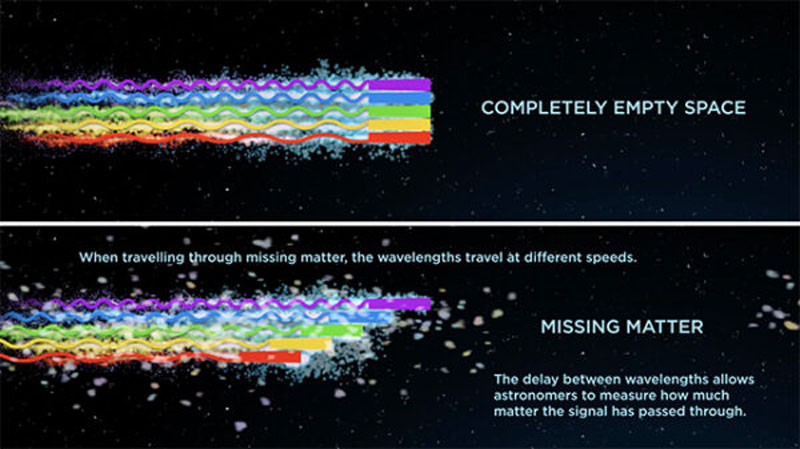
Scientist reveal mysterious radio burst received from distant space; scientists have no explanation for it
An international team of researchers has detected a rapid radio burst that defies current scientific explanations. These fast radio bursts (FRBs) were first discovered in 2007 and have remained enigmatic phenomena awaiting comprehensive explanations. While some have speculated about extraterrestrial origins, this theory has not prevailed. This new and exceptionally powerful and distant FRB presents an entirely new puzzle, promising to advance our understanding of the cosmos.
The event, known as FRB 20220610A, was observed in June 2022 using the Australian Square Kilometer Array Pathfinder (ASKAP), a radio antenna array located in Australia. Optical follow-up observations using the Very Large Telescope (VLT) confirmed the source of the radio burst, identifying an anonymous galaxy situated nearly 8 billion light-years away. This discovery has generated significant excitement for several reasons.
Never before has an FRB been recorded at such an extreme distance. Moreover, the signal's intensity surpassed previous records by a staggering 3.5 times. In just a few milliseconds, the cosmic event emitted an energy equivalent to the total energy output of our Sun over 30 years.
One prevailing theory suggests that fast radio bursts result from stellar flares or "starquakes." Neutron stars emitting these signals do so due to core shifts, experiencing immense pressure that imparts them with unprecedented energy. However, such processes impose limits on the brightness of these events, whereas FRB 20220610A far exceeds all calculated values.

Another theory posits that fast radio bursts originate from collisions between high-speed particles ejected by neutron stars and the surrounding matter in their stellar winds. However, the data from FRB 20220610A also transcend the scope of this model, leaving scientists with much to contemplate.
But there's more to this discovery. The fast radio burst FRB 20220610A could prove invaluable in the search for invisible, ordinary matter in the Universe: cold interstellar gas and dust. These elements remain invisible in the optical range and are poorly detected in other spectra, particularly at vast distances.
The propagation of radio signals through the Universe, as they encounter dust and gas clouds, causes them to scatter and disperse, akin to the formation of a rainbow when sunlight passes through raindrops. Different wavelengths of light deviate by varying amounts as they traverse dust and gas clouds, each with its electromagnetic background that naturally influences the fast radio burst waves. In the case of FRB 20220610A, the scattering proved atypical, even though a similar occurrence had been observed only once before.
This means that scientists will need to account for this new factor in their quest to detect cold interstellar matter using fast radio bursts. This "yardstick" is turning out to be more complex than previously assumed. However, the more precise our calculations become, the more we'll learn about the world in which we live.
- Related News
- Wheel of Death: new method will help astronauts stay fit in low gravity
- Due to anomalies of Orion spacecraft, lunar exploration program may be delayed for years։ NASA
- TAO Observatory: World's highest telescope to study evolution of galaxies and exoplanets
- Powerful M9.5 solar flare causes radio blackout in Pacific Ocean
- What will happen to the Earth if the Moon disappears?
- Key to conquering the Red Planet: Why is NASA studying solar storms on Mars?
- Most read
month
week
day
- Digital Julfa Network is launching a pan-Armenian centre in the metaverse, on the Fastexverse virtual platform 1004
- Xiaomi unveils exclusive Redmi Note 13 Pro+ dedicated to Messi and Argentina national team 889
- Sparkles: Boston Dynamics unveils a furry robot dog that can dance (video) 839
- Internet 500 times faster than 5G tested in Japan: It allows to transfer five movies in HD resolution in one second 712
- Is there a ninth planet in the solar system? Scientists find new evidence 708
- What will happen to the Earth if the Moon disappears? 699
- iPhone 16 may get colored matte glass back panel, 7 colors 672
- How to understand how protected a smartphone is from water and dust? 670
- World's largest 3D printer was created in USL It prints 29 meter-long structures 658
- Which smartphones will be the first to receive Android 15? 643
- Archive
